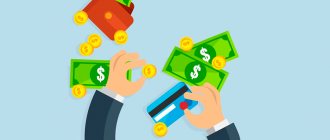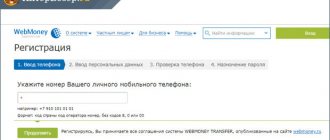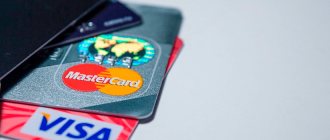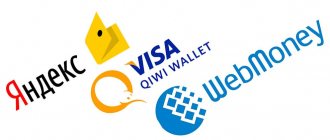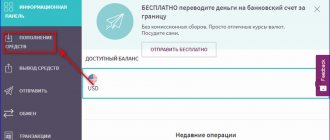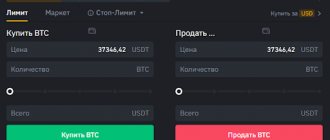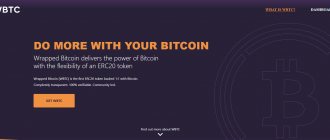Over the past few months, Russians have been rapidly withdrawing money from bank accounts. This process, which began in mid-March when oil prices collapsed and the economy was hit by the pandemic, could not be stopped now that quarantine measures have been eased.
Currency options
Cash. No matter how crazy it may sound, in most cases this will be the most optimal (and even the most profitable) option.
Currency deposits.
So-so pleasure. I monitored the rates on foreign currency deposits here. In euros, rates are practically zero. Banks give 0.01% per year? Some - 0.1%. Are you seriously? In various “murky banks” and smaller offices, of course, you can find a slightly higher rate. But they think it’s not worth risking your money in vain for the sake of receiving additional tenths of a percent of income.
The situation in dollars is better (compared to the euro), but it is also far from ice. They offer something at the level of 0.5% per year. Yes, you still need to look where. There are options for more profitable accommodation. But to get a higher percentage (at least raise it to 0.7-0.8%), you need to have at least 20-30 thousand dollars (many ask for 50-100K) and (or) place a deposit for a long period (2-3 years).
Are you ready to freeze your money at 0.5% per year? And if something happens (in case of early withdrawal), you may not even see this small half percent. I personally definitely pass by.
Money market.
In terms of currency instruments, we have the FXTB ETF. The fund contains short-term US Treasury securities (Treasuries) with maturities of up to 3 months. It seemed like a great option. But as practice shows, not very well.
The main problem: the fund provider charges a management fee. It seems to be small - only 0.2% per year. But given that the treasury rates are now almost at zero, we get negative returns.
My respect to the Finex provider. He does not hide the current (real) profitability of the FXTB fund and publishes it on his website.
The latest statistics on the FXTB ETF can be found here.
Some may say that there is profit in rubles. Over the course of a year, we earned as much as 20%.
Yes, but... all the growth shown was due to the weakening of the ruble. You will also have to pay taxes on this income (you will be subject to currency revaluation).
Article on the topic: What is more profitable FXTB or dollars?
Foreign bonds or Eurobonds. It is dangerous to buy long-term securities. The price can vary greatly. Especially during negative periods. If you try to find short-term securities with a close maturity date, they simply do not exist. And even if something happens, liquidity leaves much to be desired. The spread in the glass can be several percent. Plus again the risk of currency revaluation.
Absolutely not.
Eurobond/currency bond funds.
Eurobonds denominated in dollars (FXRU / FXRB) have strong drawdowns. During periods of panic in the markets, their value can fall by 5-10% or more. Therefore, there is no point in keeping such tools in the form of a cache.
Money "fleeing" from banks
In May, the cash money supply increased by 248.8 billion rubles, in April - by 544 billion rubles, in March - by 700.9 billion rubles, and in June another 391.8 billion rubles came into circulation in the form of cash banknotes, it follows from Central Bank data
Read more ➤
The total volume of cash money supply as of June 1 reached a historical record of 11.2 trillion rubles. This is almost 80 thousand rubles for everyone living in the country, including infants and old people. The Central Bank's statistics have never recorded anything like this in the entire available history.
What is better, dollar, ruble or euro?
In what currency should I keep my cash?
Historically, in the long term, the currency looks preferable to rubles. On average (over the last 2 decades), the ruble has weakened against the dollar by 5% per year. But this rule only applies to long intervals.
In the short term, we can observe a completely opposite picture. For example, during the period from 2016 to 2022, the dollar exchange rate decreased (by almost 30%). You can find many such cases on the chart.
Dollar/Ruble pair - chart for 5 years
What to do?
There is a golden rule - diversification. Distribute your cache among different currencies. This provides insurance: no matter where the rate moves, on average you will be in a neutral position.
What is the benefit of the bank from accruing cashback to customers?
An increase in the turnover of non-cash and cash funds, an increase in customer activity affects the economic indicators of the bank. At the same time as connecting cashback, the bank manages to offer customers additional paid services. Due to the annual subscription fee, the income of the credit institution increases. People who are addicted to bonus programs begin to spend more money - they take out loans and go into the red. Accordingly, income from loan rates increases. Banks can pay the client not with money, but with points, which are accepted by partner stores. For example, the “thank you” campaign from Sberbank is widespread.
Options in rubles
What can be used as ruble cash?
- cash;
- deposits/cards;
- short bonds;
- money market funds.
Cash . For a very short period of time, this is quite an option. Especially for those who do not want to make unnecessary movements to park money. And in some cases (I’ll tell you why later) it’s more profitable to just hold cash.
Bank deposits and cards. Interest on bank deposits directly depends on the Central Bank rate. And they are approximately at the same level. And that's the best case scenario. The main disadvantage of deposits is the freezing of money for the entire term of the deposit. If you withdraw early, you lose all the accumulated interest for the entire period. Consider the money to have been lying around for free for the entire period.
As an option, you can use short-term deposits (for a month, three months) or a deposit with the possibility of withdrawing funds without losing interest. But the rates on them will be even lower. Almost 1.5-2 times.
A deposit with partial withdrawal without loss of interest is, in my opinion, a common scam. Why? When you cash out part of the money from the deposit, you lose the accrued interest for the entire period on the withdrawn amount. You had 100 thousand in your deposit. Six months later, they withdrew 30 thousand - you can assume that you opened a deposit for only 70 thousand, and you had thirty thousand lying in the bank for free.
What can you think of in this case?
As for me, the ideal option is to get yourself a card with interest accrual. For many, the interest on the card is not inferior, sometimes even superior, to bank deposits.
A little advice from an experienced person. Interest on the card balance can be accrued in two ways: on the daily balance or on the minimum balance during the month. A card with daily interest accrual can be many times more profitable (I wrote about it here).
Short bonds. Bonds have one remarkable property - accrued coupon income. For each day you own the paper, you are accrued interest in the form of income tax. Whether you hold the papers for a day, a week or a month, you receive a reward in proportion to the period of ownership. And when you sell, you don’t lose these percentages (as is the case with deposits). Very similar to a card with daily interest accrual.
But bonds have a huge disadvantage. The price of bonds on the stock exchange can fluctuate (by tens of percent). True, the closer the maturity date, the less volatility. Several months before maturity, the value of the securities becomes more or less constant.
Therefore, no long bonds. Only short-term securities with maturity up to 1 year. When repaid, we transfer them to new ones.
Money market instruments. What do we have in rubles? Two instruments: ETF FXMM from Finex and fund VTBM from VTB. If you look at the quotes chart, we have an upward straight line. Virtually no drawdowns (and risks accordingly).
ETF FXMM - annual chart
For example, when equity markets fell 20-30-40% in March 2022 and then recovered throughout the year, the FXMM ETF was down only 0.3%.
Pros: the funds have returns comparable to deposits, but with much greater liquidity. You can sell instantly any day without loss of income.
What are the disadvantages?
When buying (and later selling), you will incur certain expenses: broker commissions, management fees and spread in the order book. Considering the low expected return of the funds, it may turn out that you will go into the red. I explained in detail why this happens using the example of the VTBM fund.
Therefore, in the short term it is better not to get involved with such things. If you want to park money in such funds for several days, it is better to just leave it in the account. It will be cheaper not to invest. This rule, by the way, also applies to short bonds.
Operating principles of the system
Connecting the option to your card means that the cashback program will return part of the money spent on purchases back.
You can connect the function to an existing card at an ATM, an application, or at one of the offices of a credit institution. There is a category of cards that are already issued with such an offer, and cashback cannot be changed or disabled. A bank card with cashback for travelers gives you one mile for every 60 rubles spent. In order to save up for a free ticket to a city the distance to which is 15,000 miles, you must spend 90,000 rubles. per year or 7500 rub. monthly. Is this beneficial to you?
Cashback should not be confused with a bonus or discount program that involves crediting points that cannot be spent elsewhere or cashed out. Unlike these programs, cashback is returned in real money, which can be spent on anything, but only within the terms of the program.
Bank cashback is calculated as follows:
- Purchasing a product or service from a partner store using a bank card payment with cashback.
- The brand transfers your money to the Bank in which the plastic card of a certain type is registered.
- A month later, the credit institution transfers the accumulated cashback points to your bonus or regular account.
What functions does a cash-in ATM have?
In addition to issuing and accepting cash in Russian rubles and foreign currency, such devices are capable of conducting other financial transactions:
- replenishment of mobile phone, Internet;
- payment for goods and services is carried out according to the seller’s details;
- repayment of loans;
- payment of utilities, fines;
- currency exchange;
- checking card balance;
- payment for tuition and meals for a child in kindergarten;
- connection of mobile banking, SMS notifications, and other additional services;
- transferring money to cards of other individuals;
- installation, change of PIN code.
If the client decides to top up another person’s card account (and opened with another bank), he should be aware that a commission may be charged from the payment amount
. You will not have to pay for replenishment only if there is a partnership agreement between both banks.
Benefits of technology
When carrying out financial transactions using ATMs or terminals with a cash-in function, no identification document is required.
Besides:
- funds are credited instantly;
- there is no commission fee if there is a partnership agreement between banking structures;
- saves time, since it does not require standing in queues directly at the bank branch;
- Self-service terminals with the designated function are located in almost every region of the country.
Such a system will only expand in the future, so it can be used in all banking institutions.
How to top up a card via an ATM
The algorithm of actions is very simple. All that is required for this is to have a card with you and the amount of money that will need to be credited to the account. So, cache in this version consists of the following actions:
- you need to place your bank card in the selected ATM;
- indicate the correct PIN code;
- in the menu that appears on the screen, select the “Cash deposit” option;
- deposit banknotes into the receiver (it is possible to deposit either one bill at a time or a whole bundle - depending on the type of ATM).
Then the ATM recalculates the deposited bills (if a whole stack was placed), displays the deposited amount on the screen and prompts you to select a further action. To confirm the deposit, you need to click on the “Deposit” item, but if you need to deposit more money, select “Add banknotes”.
It is recommended that you print out a receipt, which will serve as confirmation of the transaction. It is necessary in case there are any misunderstandings with the transaction made.

